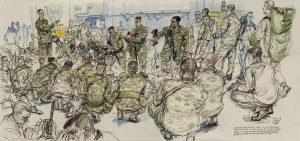In last week’s column, I explained how I developed a way to help our wild child. This involved walking him through a series of six question whenever he broke our rules, school rules, and social rules.
This approach is also helpful for any crisis your child experiences. It’s a problem-solving approach. Parents can use these six questions to examine any problem and come up with solutions for the current issue with lessons for the future.
Boys and girls can draw, write, or talk depending on their developmental level, abilities and communication style. And sometimes, when you've waited a while for them to respond, you can help them answer. Remembering their developmental level and communication styles to draw, write, or talk.
Here is the outline I used:
1. What happened/what did you do?
“What happened” is for a crisis. Your child is upset about something they cannot communicate. All children face difficulties in life. And the list of issues is infinite. So, you help your child describe what's bothering them on paper or with words.
“What did you do” is for rule breaking. Your child probably knows what they did, but might not want to tell you. If that is the case, you can draw the beginnings of a child doing something wrong.
If you are not too angry, you can even begin this in a silly childlike way making up great nonsense like the cat did something or another. Eventually, your son or daughter will pick up a crayon, saying something like, “that’s not what happened!”
2. What was wrong with what happened/what you did?
“What happened” talks bring up scary feelings. A fight, the weather, failure at school, bullying, and so on. Then it’s up to you to comfort your child, share your feelings, and even share your own coping strategies.
“What did you do” talks are more about defiance and rule breaking. The anger and struggling behavior have lifted somewhat, and you have a teachable moment here. It’s important to get as specific as possible with your child why what they did was wrong. Using their language and developmental level, you show them rules for living in the world with other people. With some children, you will need to get very specific about why what they did was wrong. I often had to spend considerable time reaching inside myself to find clear words to explain to wild child what was wrong with what he did.
3. What were you thinking at the time?
Thoughts matter. You'll get answers like "I should have the red ball." This question gets at what motivations your son or daughter had when they broke the rules or faced a crisis. “I don’t know” is often the first answer. You can help by imagining out loud and drawing what you might have been thinking if you experienced or did what they did.
4. How were you feeling at the time?
The most basic feelings are mad, sad, glad, and afraid. You can draw or find little faces expressing feelings online. Emojis are perfect for this part of the conversation. And have your child point one or more out. Then you can talk more with them and draw with them all about those feelings. Another way to help is to imagine yourself taking the actions your child took talking him or her through their part of the conversation. Then leave space for your child to speak up.
5. Why did you react to it or do what you did?
This is a summary of the first four questions. I think it’s important to help your child get to a place where they can own their feelings, motives, and behaviors. They may need a lot of help from you doing this. Working like this with your kids is also a bonding experience. It strengthens your connection. And if you can listen and talk, you will feel much more connected.
6. What can you do differently the next time something like that happens, or you feel and think as you did?
This is the end result. You and your child have identified the behavior, feelings, and thoughts. Now you get to help your child identify solutions to his or her own thoughts and feelings. Again, children’s language. You can share your experiences and solutions.
By now you may have created multiple drawings. You have taught your child new coping strategies and/or reasons to follow the rules. Best of all, you have listened and talked with your child in a productive and growthful way.
Next week I am going to describe steps you can take when you get furious at your child.
I'd love to hear from you. Feel free to send me questions, requests for future writings, and your opinions. You can reach me at aGentleDrLaura@ColemanLifeCoaching.com.













